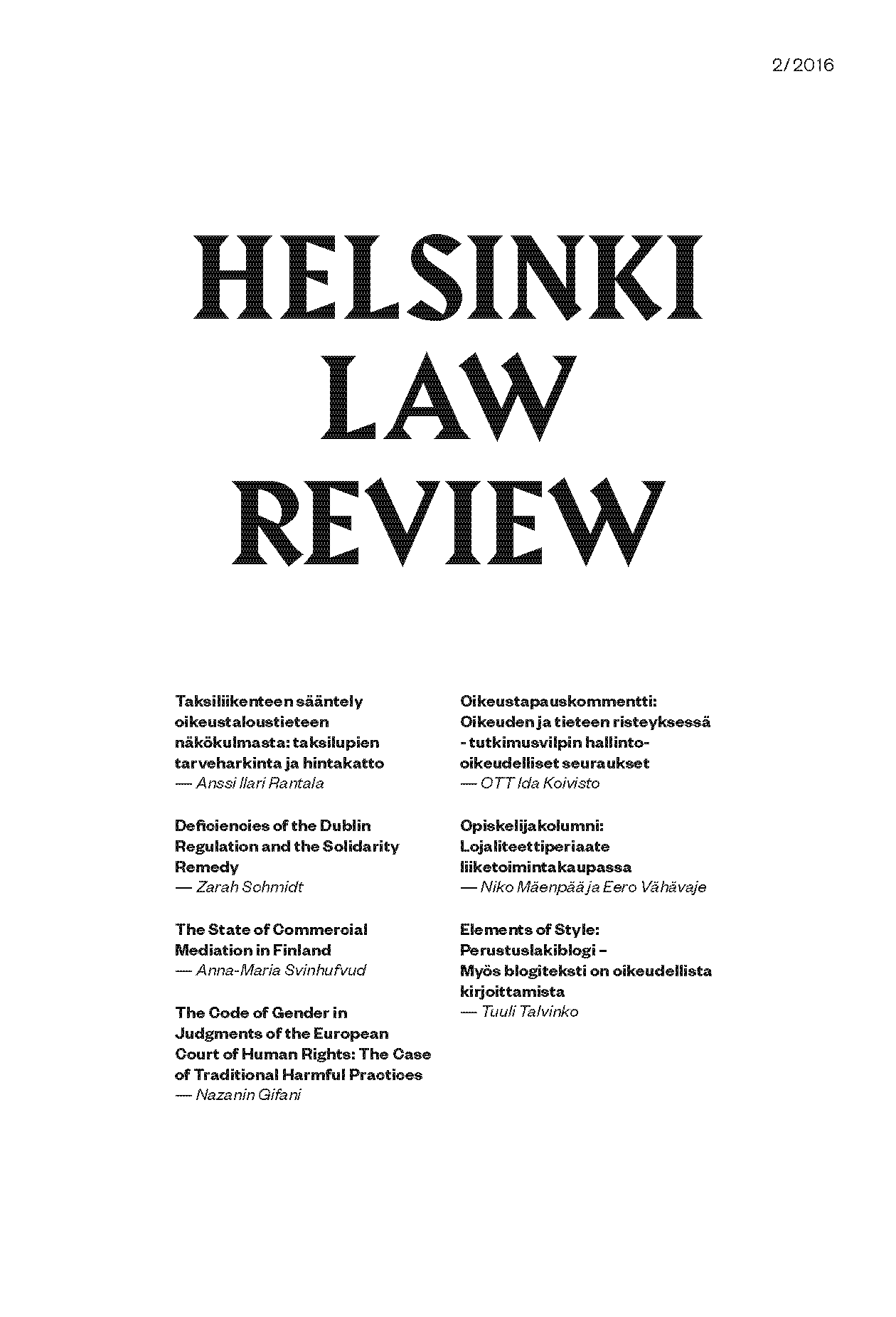Law and Economics perspective on the Regulation of the Taxicab Industry in Finland
need-based distribution of taxi permits and price control
Keywords:
legal barriers to entry, information asymmetry, price control, overregulation, taxicab markets, technological change, mobile applicationsAbstract
In this article I evaluate the aims and means of the legislator in the regulation of the Finnish taxicab industry. Currently, the taxicab industry is one of the most regulated and restricted industries in Finland. Local state authorities limit the quantity of taxi permits which creates a barrier of entry to different kind of taxicab markets. Furthermore, taxi fares are regulated by a statutory price control mechanism. The explicit aim of the legislator is to ensure the nationwide supply of high quality taxicab services and to ensure safety of the rides both to customers and drivers. However, the implicit aim of the legislator is to ensure that the taxi business provides a sustainable source of income to the authorized taxi entrepreneurs. Due to the legal barriers to entry and the subsequent lack of competition, the entrepreneurs with the taxi permits are getting monopoly profits. The legislator’s means to accomplish the aforementioned explicit goals are inefficient and contrary to the interests of the customers. Local state authorities have been given an impossible task to create a balance between supply and demand. A free market mechanism would do the job better. Additionally, there are more efficient ways to ensure safety of the customers and drivers than the existing legislation. Price regulation is unnecessary and also partly decreases competition. Issues with consumer protection could be resolved in lighter ways e.g. with duties to inform customers. Due to the latest smartphone applications, information asymmetry between customers and the taxi entrepreneurs is vanishing. Both the barriers to entry and the price control mechanism are not efficient enough to accomplish the legislator’s explicit goals and their necessity should be evaluated very critically.


